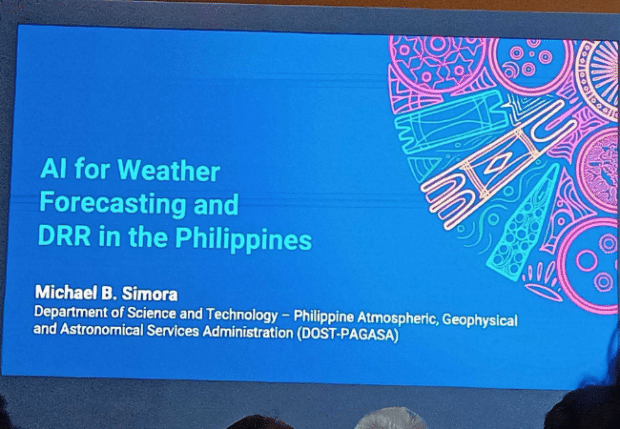DOST shows PH’s AI weather forecasting tools at APMCDRR 2024
Micheal Simora of the Department of Science and Technology discussed the Philippines’ latest AI weather forecasting tools at the Asia-Pacific Conference for Disaster Risk Reduction.
Specifically, he unveiled DOST-PHIVOLCS’ multi-agency initiative, GeoRiskPH, its tools, and other projects.
READ: APMCDRR 2024: Harnessing AI, space tech for disaster resilience
Simora explained that these efforts enable the country to anticipate increasingly frequent national calamities. Consequently, they can mitigate their damage and save lives.
What are the Philippines’ latest AI weather forecasting tools?

Micheal Simora started with GeoRisk Philippines’ Integrated Platform (GRIP). It is a centralized platform that grants access to GeoRiskPH’s products and services:
- HazardHunterPH is a publicly available platform for tracking typhoon, earthquake, and volcano alerts. Moreover, it lets everyone download hazard maps and other information.
- GeoAnalysisPH is another public hub for sharing Disaster Risk Reduction Management plans.
- GeoMapperPH is a credential-based platform that facilitates field surveys for pre- and post-disaster activities.
- PlanSmart is another limited platform that integrates the Ready to Rebuild Planning Guidebook with the previous tools. As a result, it streamlines the creation of a comprehensive Rehabilitation and Recovery Plan (RRP).
Then, Simora discussed the DOST-PAGASA’s recently started AI projects:
- Artificial Intelligence Powered Weather Forecasting for a Resilient Philippines (AI4RP)
- AI-Based Flood Forecasting and Early Warning System for Laoag River Basin
- Cauayan City Digital Twin
The first is a collaborative project involving the DOST-PAGASA, DOST-AST (Advanced Science and Technology Institute), and Almo Inc.
AI4RP will train PAGASA staff on developing AI-based solutions. These will enable high-resolution deep learning-based weather forecasts for up to 14 days.
The second is a partnership with the Korean Ministry of Environment and K-Water. It will establish a river basin monitoring system.
Moreover, it will create an AI-based flood model using the data gathered in the established monitoring system.
Next, Cauayan City, Isabela, partnered with GIS software solutions provider Graffique to make a 3D digital twin.
It is a digital replica of the area, facilitating the LGU’s post-disaster damage assessments.
Aside from AI weather forecasting tools, the DOST weather specialist explained how local governments like Manila’s use the technology:
“In terms of warning and dissemination (of information), Manila city government used generative AI technologies, like chatbots, in handling complaints.”
“But we also use that in disseminating and communicating hazard warnings,” Simora added.